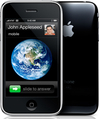As evidenced by a newly granted patent Apple wants parents and employees to be able to able to “configure context-based restrictions” for a computing device such as an iPhone, iPad, or Mac. The disclosure generally relates to operating a computing device, and specifically to remotely restricting use of the device in particular contexts.
Background of the patent
In the patent, Apple notes that modern mobile devices are often a distraction during the day when the user of such devices should be focused on a productive activity, like working, learning, or participating in some other productive activity.
The ideas behind the patents
Apple says that, in some implementations, a computing device can restrict the use of another computing device in certain contexts. For example, a parent may wish to use the parent’s computing device to restrict her children’s use of the children’s computing devices while the children are in school while the children should be participating in some other activity.
For example, the parent’s controller device (say, an iPhone) may be enabled to remotely configure and control the usage of the child’s device (say another iPhone or an iPad) without needing to physically access them. The parent may implement limitations, permissions, or different policies that may govern, for example, the ability of the child’s device to communicate with other devices, execute various application functionalities, run any particular software, and manage its own settings.
Apple says that particular implementations provide at least the following advantages. A parent can remotely restrict functionality at a child’s device without physically accessing the child’s device. This facilitates the parent’s management of the child’s device use and eases the burden of device management on the parent, particularly because the parent can create restricted mode configurations for multiple devices without having to configure each device individually.
Apple says that particular benefits also include a mode exit process that makes obvious a child’s attempt to exit restricted mode. The tech giant adds that this improves the effectiveness of restricted mode and reduces the parent’s configuration burden because the child is likely to avoid removing restricted mode configuration if the mode exit process is cumbersome and will alert another person.
The parent is alerted to any functionality usage at the child’s device, further improving reliability because the child knows that circumvention attempts will be reported to the parent and so the child may not make such attempts.The child’s satellite device stays in restricted mode for longer times, using less battery power, bandwidth, and processor cycles. This also improves device quality and reliability and lowers costs associated with bandwidth (e.g., data connections) usage and power usage as well.
What’s more, the satellite device can still perform certain functions while in restricted mode, such as emergency communications or contacting the child’s parents, further improving device usability.
Article provided with permission from AppleWorld.Today





